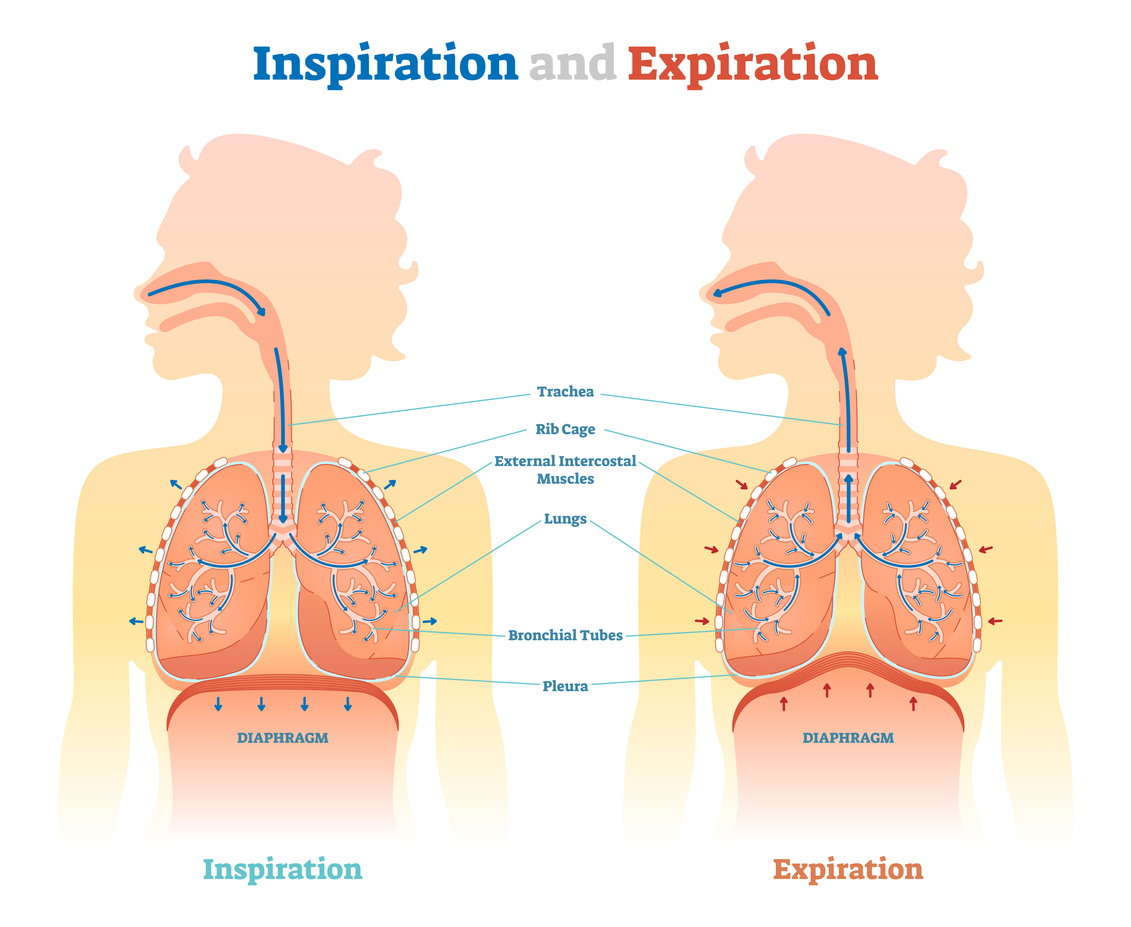Depending on where you are in your mental wellness journey, you may have heard or read something about the benefits of focusing on the breath when it comes to alleviating symptoms of anxiety or as a healthy grounding exercise.
But have you heard of diaphragmatic breathing?
Diaphragmatic breathing is not as intimidating as it sounds. It is also called abdominal breathing, relaxed breathing, or belly breathing, and experts have been researching the potential benefits
of this technique in helping with a variety of mental and physical health conditions. Diaphragmatic breathing is important because the diaphragm plays an essential role in breathing.

We have two primary modes of operation in our body: one is fight or flight, and the other is rest and digest. We have all heard of fight or flight. Fight or flight is a response to acute stressors
like being chased by a saber tooth tiger. Fight or flight is when our nervous system is on alert. Our body's fight or flight mode should come on quickly and go away after the stressor has passed,
then we return to rest and digest. Fight or flight is perfect if a saber tooth tiger is attacking you - but that does not happen much anymore. However, today's world has many other stressors: finances,
work, the economy, school shootings, wars, illness, etc. Sometimes our bodies can go into fight or flight mode and not quickly return to rest and digest. Diaphragmatic breathing can help you return to rest and digest.
Diaphragmatic breathing offers several benefits, including:
Almost everyone can benefit from diaphragmatic breathing exercises.
 The diaphragm is a muscle located near the center of your belly that is shaped like a dome. It plays a key role in breathing by contracting when you inhale and relaxing when you exhale.
The diaphragm is a muscle located near the center of your belly that is shaped like a dome. It plays a key role in breathing by contracting when you inhale and relaxing when you exhale.
Over time or with certain health conditions, the diaphragm can weaken and make breathing more difficult. So keeping the diaphragm strong is essential for avoiding and alleviating breathing problems that can worsen issues like depression and anxiety.
 While breathing deeply seems pretty straightforward, many people are missing out on the intended effects by doing it incorrectly.
While breathing deeply seems pretty straightforward, many people are missing out on the intended effects by doing it incorrectly.
We tend to take a deep breath in and fill up our chest with air, unaware that we are not actually filling up the lungs.
The solution? Diaphragmatic (belly) breathing.
Focusing on drawing air down into the low parts of the belly allows you to fully fill the lungs, so you get the most physical and mental benefits from those deep breaths.
It may feel awkward at first since we are taught to suck in our bellies to appear thinner and stengthen the abdominal muscles (abs). Engaging the abs is great, but while you are practicing diaphragmatic breathing, forget about your waistline so you can fully enjoy the benefits of this exercise.
To get started, we have an entire page dedicated to instructions for diaphragm breathing.
We have an entire page dedicated to instructions for diaphragm breathing.
Cleveland Clinic has a great informational page about diaphragmatic breathing.
Harvard Health Publishing has a page about Learning diaphragmatic breathing.
Physiopedia has a page about Diaphragmatic Brerathing Exercises.
Nell Mead - Physiotherapist has a great page, with videos, all about Training your diaphragm to help relieve pain and stress.